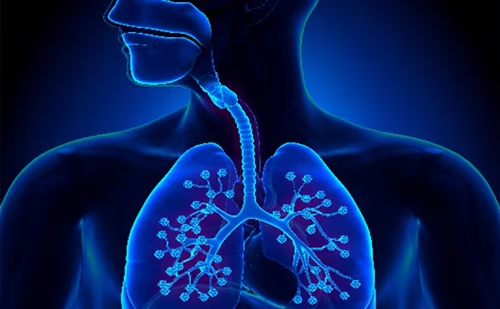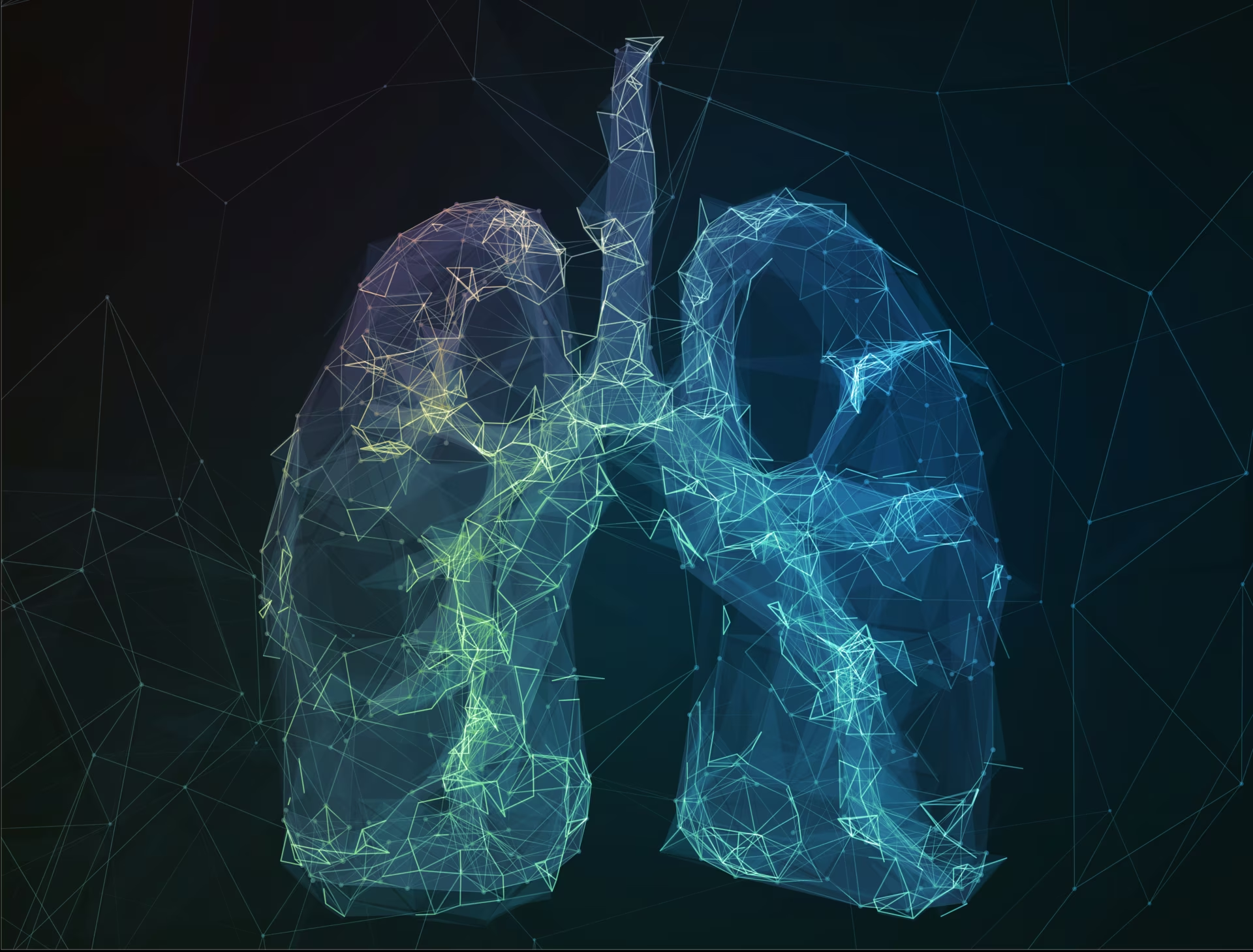As physicians, we evaluate patients while they are awake in our clinic. However, sleep is a vulnerable period for the respiratory system because of reductions in minute ventilation, lower lung volumes, increased upper airway resistance and positional ventilation–perfusion mismatching.1,2 Patients with chronic lung disease (CLD) may be at risk for hypoxemia during sleep; they have reduced baseline arterial oxygen pressure that develops over time with advancing lung disease. Also, ventilation–perfusion mismatching puts them closer to the steep-decline portion of the oxygen dissociation curve, so even the expected reduction in minute ventilation during sleep poses a risk for marked reductions in SpO2. Over time, progression of lung disease increases airway resistance and eventually results in alveolar hypoventilation. Sleep is normally characterised by hypoventilation related to decreased drive to the upper and lower respiratory muscles. Nocturnal hypercapnia may be present in CLD without nocturnal hypoxemia or daytime gas-exchange abnormalities.3–6
Increased upper airway resistance, including nasal obstruction, is a risk factor for obstructive sleep apnoea (OSA). Cystic fibrosis (CF) and primary ciliary dyskinesia (PCD) are associated with a high incidence of chronic sino-nasal disease, including nasal polyps. OSA is associated with considerable metabolic, cardiovascular and neurocognitive morbidity. Presence of OSA may put children with CLD at increased risk for growth failure and pulmonary hypertension. Patients with chronic lung disease experience both subjective and objective sleep disruption and gasexchange abnormalities during sleep, and sleep problems are usually underestimated in these patients. Non-invasive ventilation and supplemental oxygen may be helpful in mitigating the adverse effects of nocturnal hypercapnia and hypoxemia.6,7
More than 50% of CF patients have disturbed sleep, especially with advanced lung disease. They also have sleep complaints such as sleep-onset insomnia, frequent awakenings, night coughing, snoring and excessive daytime sleepiness.6 Even when stable, patients with CF report more frequent awakenings with coughing. When evaluated with objective methods, infants with CF have a sleep architecture similar to healthy controls.8 However, children with CF have lower sleep efficiency, reduced rapid eye movement (REM) sleep and increased electrocortical arousals. Children with more severe pulmonary disease (lower forced expiratory volume in 1 second [FEV1]) have lower sleep efficiency and more nocturnal coughing. There is an association between decreased sleep efficiency and decreased mood profile, including happiness.6
Nocturnal hypoxemia in children with CF usually precedes diurnal hypoxemia and is generally unrecognised symptomatically. Significant hypoxemia is observed primarily during REM sleep and has been associated with pulmonary hypertension. Nocturnal hypoxemia is generally present when FEV1 is <64% or if the baseline SpO2 is <93–94%.6 In a study evaluating nocturnal hypoxia, 96% of children with CF, with normal pulmonary function tests or mild to moderate lung disease, had desaturation during sleep. Nocturnal oxygenation correlated with clinical and radiological scores, daytime PaO2 and SaO2, and Z-score of weight and height.9
When giving supplemental oxygen to patients with CF, we need to balance the risks of developing pulmonary hypertension related to nocturnal hypoxemia against the costs, psychological impact, logistical difficulties, discomfort and potential for limiting mobility. Long-term oxygen treatment should be considered for hypoxic children with CF as a means to improve school attendance and for those who obtain symptomatic relief. In CF, monitoring of CO2 levels should be carried out when oxygen therapy is initiated.10 Non-invasive ventilation, used in addition to oxygen, may improve gas exchange during sleep to a greater extent than oxygen therapy alone in moderate to severe disease. The benefits of noninvasive ventilation have largely been demonstrated in single treatment sessions with small numbers of participants.6 The impact of this therapy on pulmonary exacerbations and disease progression remains unclear.
OSA is very prevalent in children with CF. In a study of 63 children with CF, 56% had OSA syndrome (apnoea index >1/h) and 26% had moderate to severe OSA (apnoea index >5/h) OSA symptoms such as mouth breathing during sleep (83%), difficulty breathing during sleep (70%) and snoring greater than three times/week (38%) were observed commonly among patients with CF.11
Children with non–CF bronchiectasis have chronic suppurative lung disease similar to CF. One study evaluating sleep in children with non- CF bronchiectasis showed that 37% of non-CF bronchiectasis patients compared to 17% of control children had poor sleep quality.12 Patients with sputum and wheezing had poorer sleep scores. The association of wheezing and breathlessness during night-time with sleep quality tended to be significant: 22% of non-CF bronchiectasis and 9% of controls had sleep disordered breathing. Non-CF bronchiectasis patients who snored had poorer sleep quality and patients with wheezing had significantly higher rates of snoring. Children with worse radiology scores also had worse sleep quality.12
Upper airway manifestations of PCD include chronic rhinosinusitis and nasal polyposis, which can increase upper airway resistance, which in turn can cause OSA. Some patients with PCD develop bronchiectasis with airflow obstruction and air trapping, which may lead to hypoxemia and hypercapnia. Abnormalities of lung mechanics and gas exchange may lead to sleep abnormalities similar to those seen in patients with CF and non-CF bronchiectasis. One study found that 65% of patients with PCD had habitual snoring.13 In polysomnography, 52% of patients with PCD had OSA. The OSA rate was higher in patients with PCD who snored. Habitual snoring and OSA were more common in patients with PCD who had cigarette smoke exposure in their homes.13 Another study supported these findings: children with PCD had higher rates of obstructive apnoea compared with controls and lower oxygen saturation, which was associated with bronchiectasis severity score.14
Bronchiolitis obliterans (BO) is a rare form of chronic obstructive lung disease secondary to a severe insult to the lower respiratory tract that leads to a variable degree of inflammation and scarring, ultimately resulting in the narrowing and/or complete obliteration of the small airways. In children, the most common form is post-infectious BO, except in locations with a considerable number of paediatric lung or bone marrow transplant recipients. One study evaluating sleep in children with BO found that the risk of nocturnal hypoxia is increased in patients with post-infectious BO and is correlated with the severity of lung disease determined by pulmonary function tests.15 Although BO patients had short durations of central apnoea, they were more prone to be desaturated due to the apnoea. The decrease in SpO2 at the end of a six-minute walk test was an indicator of the risk of nocturnal hypoxia.15
In conclusion, patients with CLD experience both subjective and objective sleep disruption and gas-exchange abnormalities during sleep. Sleep problems are usually underestimated in these patients. Non-invasive ventilation and supplemental oxygen may be helpful in mitigating the adverse effects of nocturnal hypercapnia and hypoxemia. Sleep should be evaluated in children with CLD to improve the care of these patients.







